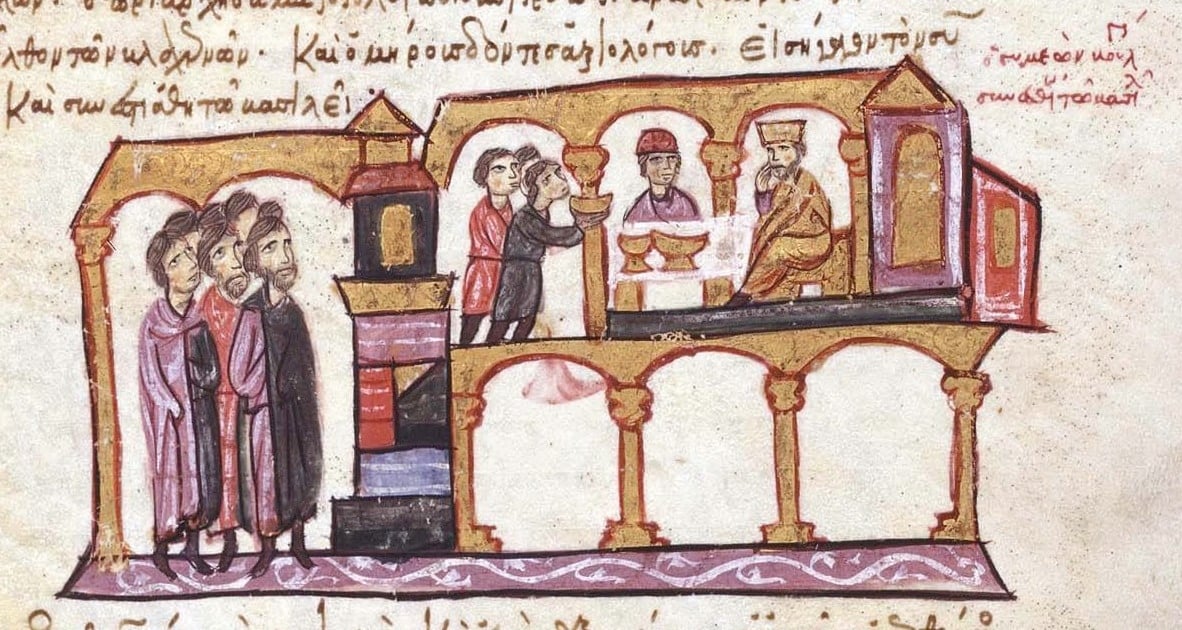Constantine VII: The Byzantine Emperor Who Preferred Books to Battles
Source: GreekReporter.com

Of all the toughest generals and politicians to wear the imperial purple in Constantinople, one Byzantine Emperor wasn’t made for the job. He would much rather read about imperial history, write about palatial machinations, and create a detailed encyclopedia on the origins of his Empire than lead it.
This was Byzantine Emperor Constantine VII Porphyrogenitus, the ruler who proved that he would much rather be in a quiet library, buried in books, than leading a marching army to a battlefield.
His story begins with the ultimate title. Constantine was a Porphyrogenitus, a rare title meaning he was “born in the purple”—that is, born in the sacred Purple Room of the palace to a reigning Byzantine emperor. His father, Leo VI, went through four wives to birth a male heir, a story that scandalized the church but secured the dynasty’s future. Yet this ultra-rare luxury of being born in the room of an heir didn’t grant Constantine immediate authority. On the contrary, it painted a target on his back and shoved him into the political shadows for the better part of thirty years.

A Byzantine Emperor in waiting
For most of his young life, Constantine was emperor in name only. He was crowned co-emperor in 908, two years before his father’s death, in a calculated move to secure the Macedonian dynasty’s future. However, power was taken by a succession of regents, culminating in the rise of his own father-in-law, the manipulative and ambitious admiral Romanos I Lekapenos.
While Romanos worked hard to deal with the messy reality of running an empire—repelling Bulgarian armies, managing the troubled treasury, and surviving inner court politics—Constantine was effectively sidelined. He was kept within the luxurious walls of the Great Palace in Constantinople, without any real authority despite his title.
What do you do when you’re an emperor with no power? You could plot, create drama to your advantage, or find a different kind of power altogether. Constantine chose the latter. He turned his luxurious confinement into an academic powerhouse. The palace in Constantinople became a hub of scholarship that would define his entire reign, making it stand out.
Constantine might have started this as an escape to his reality but he soon realized that he was on a mission. He gathered the brightest minds he could find and launched a breathtaking project to document pretty much everything: the entire human knowledge of his time. He commissioned works on statecraft, history, agriculture, and science. While others were dealing with the everyday business of running Byzantium, Constantine was building an archive of civilization itself.
Constantine VII: The Byzantine Emperor who wrote the book on how to rule
When Romanos I was finally deposed in 945, Constantine, then a mature 39-year-old, at last held the reins of power alone, without co-regents and people who wanted to get rid of him. However, this didn’t turn him into a warrior overnight. He remained the scholar he had always been, happy to delegate the messy business of war to brilliant generals like the Phokas family. His true work, his real contribution to the state, stayed the same and came from his desk rather than riding his horse. He authored or sponsored books that are, historically speaking, astounding.
His most famous work, De Administrando Imperio (On the Administration of the Empire), was a practical foreign policy guide for his son. The actual title of this work was Πρὸς τὸν ἴδιον υἱὸν αὐτοῦ Ῥωμανὸν (Pros ton idion yion autou Romanon), meaning ‘To my own son Romanos.’ It should be noted that although several of his most famous works are known today by their Latin titles, a result of later translations and scholarly conventions in Western Europe, the original texts were composed in Medieval Greek.

This was a fascinating look at the peoples on the borders of the Byzantine Empire, from the Rus Vikings to the Pecheneg horsemen, complete with smart advice on how to play them off against each other, in true Byzantine tradition. Constantine’s work was less like a state paper and more like a secret intelligence briefing from father to son.
Then there was De Ceremoniis (The Book of Ceremonies), a highly detailed manual on the theatre of imperial power. It explained everything, from coronations to welcoming foreign ambassadors, understanding that in a constantly changing world, the awe-inspiring spectacle of the court was one of the empire’s greatest weapons.
Again, the original was written in Greek. Its title was “Περὶ τῆς Βασιλείου Τάξεως” (Peri tes Basileiou Taxeos), which translates to “On the Order of the Palace.”
What makes Constantine Porphyrogenitus interesting is that in a history often defined by its conquerors, Constantine VII offers a different perspective on what power and imperial legacy truly mean. The knowledge he so carefully crafted and passed on to the next generations is one of the single most important historical sources we have to understand Byzantium and, quite frankly, the entire medieval world. Without his incredibly detailed projects, our picture of this age would be significantly lacking.
The accounts of distant peoples, the details of Byzantine court life, the insights into diplomacy—all this exists because an emperor decided a library was where his talent was rather than the battlefield.
He showed us that knowledge is as important as defending borders. While the great walls of Constantinople would eventually crumble, what Constantine left behind survived, reminding us that sometimes, the books from a library can echo much further through time than battles.
The original article: belongs to GreekReporter.com .
